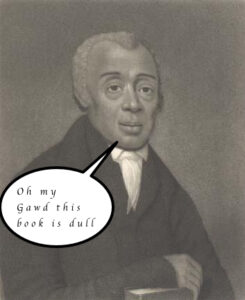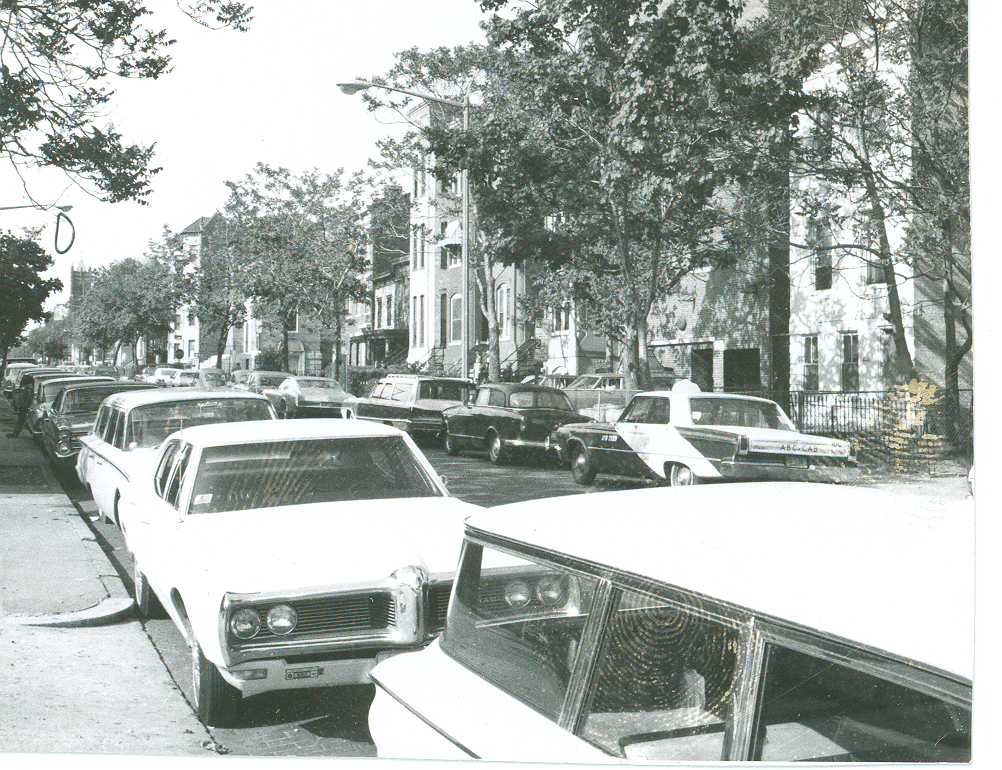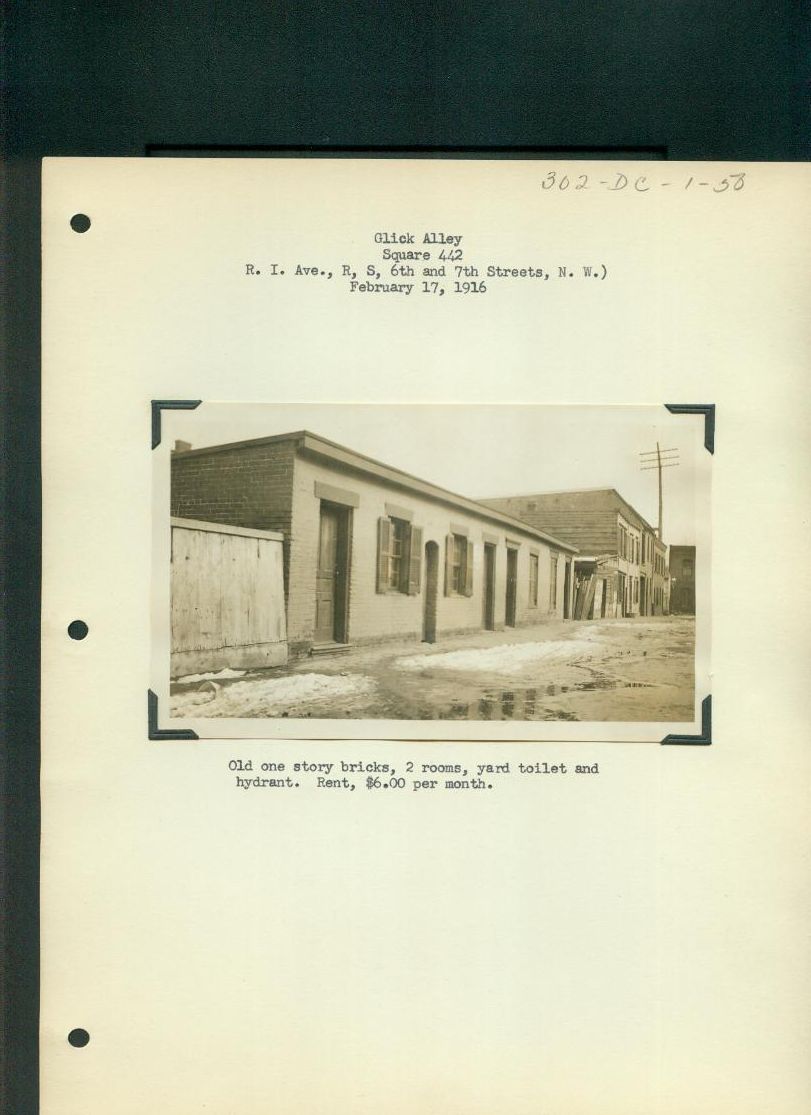
This is the old building, probably the same one that was in the 1957 Church Survey.

This is the old building, probably the same one that was in the 1957 Church Survey.
Everybody in the car,
So come on let’s ride
To the liquor store
around the corner
The boys say they want
some Gin & Juice
But I really don’t wanna
-Lou Bega ‘Mambo No. 5’
 If you can’t see the details of the map above go to this link, and click on it to see the details. It shows where the liquor stores, grocery stores, drug stores, barber and beauty shops and other stores in the Shaw neighborhood.
If you can’t see the details of the map above go to this link, and click on it to see the details. It shows where the liquor stores, grocery stores, drug stores, barber and beauty shops and other stores in the Shaw neighborhood.
It’s February again, which makes it Black History Month where Shaw’s most famous resident, Dr. Carter G. Woodson, the father of Black History, gets some recognition. In previous years I’ve reviewed his most famous book, the Mis-Education of the Negro. Please go on over to my post from 2022.

For something a little different for 2023, we’ll look at another book of his, The History of the Negro Church. I did not like this book because it was gawdawful boring. It was informative, but dull. Despite that, it is this month’s book and we’ll look at every stinking chapter. Maybe you too may learn something about the Black church.
This book is Methodist heavy. There are many denominations in American Christianity and a fair number of majority Black churches in more than a handful of those denominations. Woodson does mention the Catholic and Anglican churches but he doesn’t seem to care for them.
I have seen write ups that claim Dr. Woodson was an atheist. His Wikipedia article says he was an “outspoken detractor of the Christian Church.” I don’t really get that from this book. He seems more like an agnostic. He’s not against the Black church, he’s just not impressed with it. In Mis-Education, he spends far more time bad mouthing ‘educated Negroes’ than he does the Christian church. He’s not a believer but he seems okay with those who are, to a point. In this book, he sees the churches as a means to an ends and an organizing body of the community he cares about. He’s very interested in the denominations’ approach to slavery and how/if they addressed it and pushed back against it. And that’s why it is Methodist heavy.
Lastly, the book was originally published in 1921 and was his 3rd book. The more notable Mis-Education of the Negro, was published in 1933, long after establishing Negro History Week (which became a month, decades after his death), other achievements, and developing the skill to write for a more general audience.
It’s Martin Luther King Jr Day so here’s my recycled MLK post.
Around about the early part of the year I go pecking about looking for the speech Rev. Martin Luther King Jr gave in Shaw. And I can never find it when I look. 
Today I was looking for a 1957 Church survey for a church that was at 1520 3rd St NW. But I can’t find that, but when I was looking for it, guess what I found? Yes, the King speech.
It seems it was part of a newsletter published by MICCO (Model Inner City Community Organization) run by Rev. Walter E. Fauntroy from 812 S St NW, which is New Bethel Baptist Church. As you can see from the above flier, Dr. King had an event in Shaw on March 12, 1967 and the newsletter was published the next day.
DC History Shaw MiccoNews MLK by Mm Inshaw on Scribd
Sorry for the quality of the copy. On the second page the first couple of words in the last 4 lines of the last paragraph are:
city. The
problems of crime
the people there to
that businessmen must
I’ll still look for that church survey…..
 This is supposed to be 8th Street NW looking north. Now, in the background you will see the top of Immaculate Conception Church. However, the little house in the middle of the block with the porch looks, awfully familiar. It makes me think this was mislabeled.
This is supposed to be 8th Street NW looking north. Now, in the background you will see the top of Immaculate Conception Church. However, the little house in the middle of the block with the porch looks, awfully familiar. It makes me think this was mislabeled.
If it wasn’t then this is in Mount Vernon Square and was leveled to make a parking lot. Which then became the current Convention Center.
Any thoughts?
This is from 1916 and shows Glick Alley which is in Shaw. It was on Square 442, which is between 6th and 7th, R & S Streets and Rhode Island Avenue NW.
Glick Alley, as far as I can tell, no longer exists. No inside plumbing for these Glick Alley homes. As I remember it, the lack of plumbing made something a slum dwelling.
No inside plumbing for these Glick Alley homes. As I remember it, the lack of plumbing made something a slum dwelling.
It’s Black History Month, so I am continuing with the series of posts regarding Shaw resident and Father of Black History, Carter G. Woodson and his book The Mis-Education of the Negro, published in 1933. Don’t let the title fool you this is about church.
Religion is but religion, if the people live up to the faith they profess.- Carter G. Woodson
Wikipedia uses as a citation for the claim that Woodson was an outspoken critic of the Christian Church a site that provides no deep research to back up that claim. Woodson was an expert in the subject of the Black church, having had written The History of the Negro Church, published in 1921. I’m attempting to get through this book. It isn’t as easy of a read as Mis-Education.
What little I’ve read, I see him more of an agnostic, maybe light atheist. Like modern atheists who see a general value of a theologically based society (preferably Christian) but who do not believe in a deity. Not the fire breathing New Atheist type atheists.
In this chapter I can see where Woodson sees a great value in the Black Church because, “the Negro church is the only institution the race controls.” Once again he is annoyed at the educated African Americans (when isn’t he?) who leave the Negro church for more “ritualistic” denominations. Those being Catholic and Episcopal churches. Me: Guilty as charged. Mainly because Black people church is too damned long.
Woodson mentions he once visited ” in Washington, D. C., one of the popular Negro churches with a membership of several thousands“. I wonder was it maybe Shiloh Baptist? I mean he wouldn’t have to cross the street to pop in. Anyway, at this unnamed Black church he could only spot two college graduates in attendance, and they were only there to get something (fund raising and charity).
I can read Woodson’s frustration with the Black church. “The Negro church, however, although not a shadow of what it ought to be, is the great asset of the race.” He sees the church’s potential as an organizing body and how it could serve the Black race (theology shmeology), but can’t ignore the hypocrisy, charlatan preachers, and other human failings and shortcomings that come along with the Black church and church in general.
Let’s ignore Woodson’s lack of adherence to any faith and get to the topic of the book and this chapter, criticizing college educated Black people. Black church was where the Black masses were. It was the most powerful institution controlled by African Americans. Where were the “mis-educated” educated Afro-Americans, not in the Black Baptist and Black Methodist churches. A theme throughout The Mis-Education of the Negro is that the college educated Black people lose contact and are out of touch with the common Black person.
Woodson pointed out that the problem with the Catholic and Episcopalian churches was that a Black man’s rise in those denominations was limited. This problem has been since rectified. The current presiding Archbishop of the Episcopal church is an African American man, Michael Curry. And the current Archbishop of Washington, DC, Cardinal Wilton Gregory (the 1st Black American cardinal) heads the Roman Catholic diocese. There has been some advancement for African Americans since Woodson published his book.
It’s Black History Month, so I am continuing with the series of posts regarding Shaw resident and Father of Black History, Carter G. Woodson and his book The Mis-Education of the Negro, published in 1933.
Continuing from part 1, which was covering the first of two themes I pulled from this chapter. The second theme was that college educated were a drag on Black businesses.
Woodson presents us with this scene:
Recently the author saw the need for a change of attitude when a young woman came almost directly to his office after her graduation from a business school to seek employment. After hearing her story he finally told her that he would give her a trial at fifteen dollars a week.
“Fifteen dollars a week!” she cried, “I cannot live on that, sir.”
“I do not see why you cannot,” he replied. “You have lived for some time already, and you say that you have never had permanent employment, and you have none at all now.”
“But a woman has to dress and to pay board,” said she; “and how can she do it on such a pittance?”
The amount offered was small, but it was a great deal more than she is worth at present. In fact, during the first six or nine months of her connection with some enterprise it will be of more service to her than she will be to the firm. Coming out of school without experience, she will be a drag on a business until she learns to discharge some definite function in it. Instead of requiring the firm to pay her she should pay it for training her. Negro business today, then, finds the “mis-educated employees” its heaviest burden. Thousands of graduates of white business schools spend years in establishments in undergoing apprenticeship without pay and rejoice to have the opportunity thus to learn how to do things.
I’m not sure if HBCUs were offering valuable internship programs at the time. Education is great, but from my own experience, internship programs provide some thin proof the student knows how to do real work. Woodson mentions an unfortunate job program for HBCU graduates.
Not long ago a firm of Washington, D. C., appealed to the graduates of several of our colleges and offered them an inviting proposition on the commission basis, but only five of the hundreds appealed to responded and only two of the five gave satisfaction. Another would have succeeded, but he was not honest in handling money because he had learned to purloin the treasury of the athletic organization while in college. All of the others, however, were anxious to serve somewhere in an office for a small wage a week.